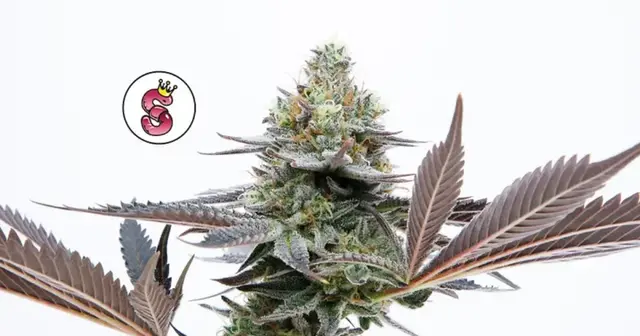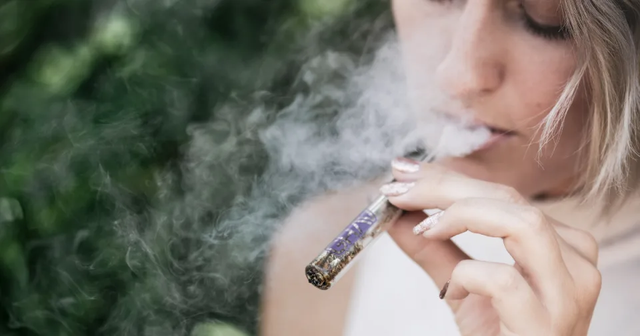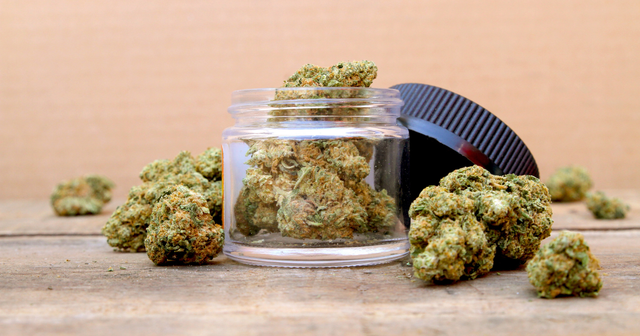Indoor vs. Outdoor Cannabis: Everything You Need to Know
We’re not here to tell you whether one method is superior to the other. We simply want you to learn about the options available in the marketplace. Written by Lucas Indrikovs.
Many factors determine cannabis quality, potency, flavors, aromas, and expected experiences. At the end of the day, the love and attention that the grower gives to the cannabis plants and their skill level and experience will directly tie to the quality of the harvest, no matter whether the plants were grown in a controlled environment or surrounded by natural elements.
We’re not here to tell you whether one method is superior to the other. There is no best method to grow cannabis. We simply want you to learn about the options available in the marketplace. Take a journey through the world of cannabis flowers, conduct your own experiments between indoor and outdoor cannabis, and determine for yourself which one is right for you!
Challenges of Growing Indoor Cannabis
Typically, when growing cannabis indoors, you will need a long list of equipment to increase the chances of a successful harvest. Everything from quality soil to high-end hydroponics systems, nutrients, and wide-ranging grow lights will exponentially increase the budget of any indoor grow.
That’s not even taking into account the electricity costs associated with even small-scale grows because of how much energy it takes to recreate the power of natural sunlight in an unnatural environment. Despite having more stable conditions when growing indoors, thanks to less exposure to pests and diseases that may harm the cannabis plants as well as near-total control of the life cycle of the plants, the cost of entry for growing cannabis indoors may push a home grower or even a large scale farmer to consider other options.
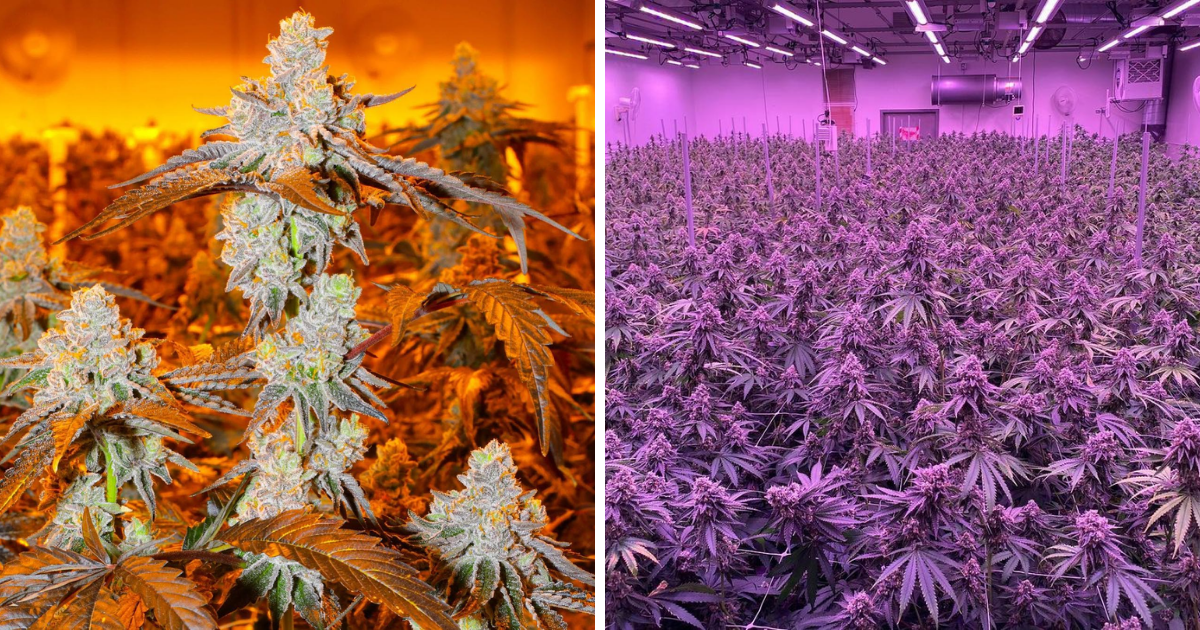
Pros of Indoor Cannabis
-
Farmers have a higher degree of control over temperature and humidity conditions when compared to growing outdoor cannabis. This empowers the grower and helps them avoid gambling with outside forces such as inclement weather.
-
You can grow year-round! Because you can control the weather conditions, light cycles, etc., an indoor cultivator can produce 3-4 harvests per year which vastly exceeds the amount of cannabis you can expect to grow in more natural environments.
-
By creating the best environment for growing cannabis plants, the cultivator can secure the best results imaginable.
Cons of Indoor Cannabis
-
There is no match for the powerful light spectrum provided by the sun. With enough energy to power over 2,000 trillion light bulbs, our sun provides over 35,000x the amount of energy needed to provide electricity for everyone on the planet.
-
Because it's so expensive to grow indoors, the cost is passed onto the consumer, which may explain why indoor flower typically costs more in the shops.
-
Replicating the sun's natural power can be exceptionally costly, affecting the size and yield of indoor-grown cannabis plants.
Challenges of Growing Outdoor Cannabis
If only growing outdoor cannabis plants was as simple as burying a few seeds underground and coming back 9-12 weeks later to a fully-flowered, stinky, beautiful cannabis plant. One can dream. While growing quality cannabis outdoors may not be as easy as casually tossing a seed outside your kitchen window, it’s also not as complicated as some think. But just to complicate this a little bit more, it’s also not nearly as easy as some others may assume.
For brands like Farmer and the Felon and Soma Rosa, growing cannabis outdoors means you will have an uphill battle against inclement weather conditions, plant-killing diseases, annoying pests, curious animals, etc. Outdoor-grown cannabis will experience much more adversity during its lifecycle and will require consistent attention to ensure this plant will live to be smoked one day.
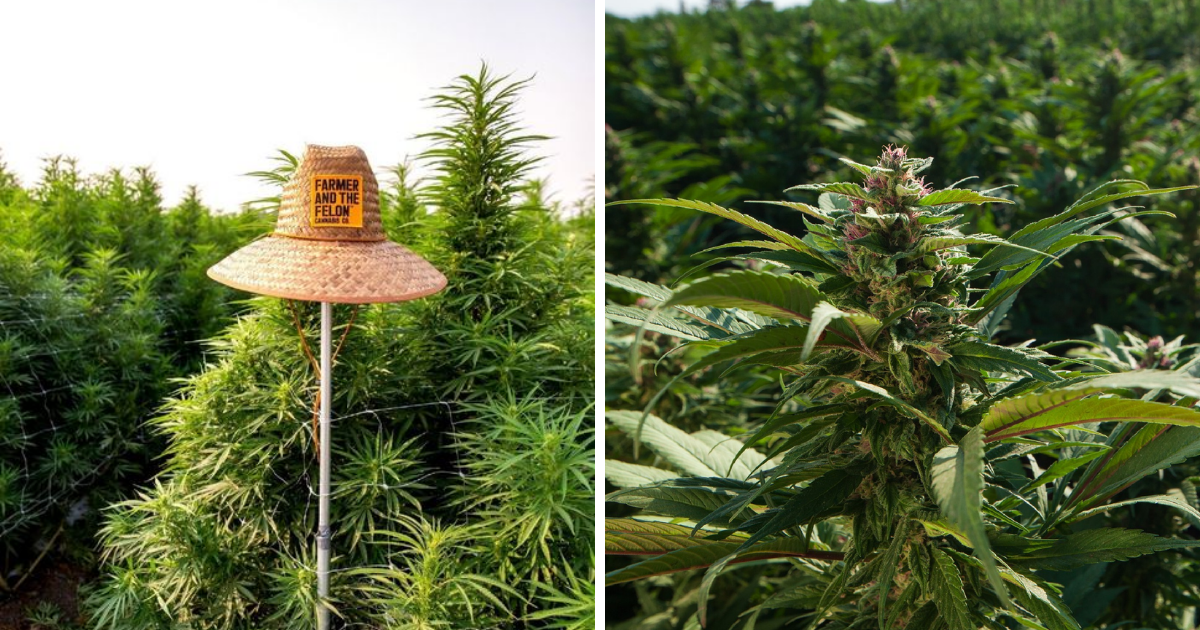
Pros of Outdoor Cannabis
-
Cannabis loves to live and grow outside! It’s been doing that for thousands of years, and it has adapted to several complex and different environments.
-
Although growing cannabis outdoors means you’ll have to contend with heightened exposure to pests and diseases, nature has our backs. Ladybugs, ants, wasps, and other insects feed on the mites and unwelcome pests that can ruin a harvest.
-
Growing outdoors is ideal if you’re a sucker for energizing Sativa cultivars. Certain strains of cannabis can grow into massive bushes, which are not sustainable for indoor growth because of the space required.
-
Thanks to the glorious California sunlight and the amount of space available in nature, outdoor-grown cannabis has the potential to dwarf the yields of indoor cannabis plants.
-
Environmentally speaking, growing cannabis outdoors results in a much smaller carbon footprint than an indoor grow, thanks to the lack of electricity consumption.
-
Cannabis also feeds off the nutrients in the soil, so as long as the soil is rich and regenerative, the resulting buds will be tastier and rich in terpenes.
Cons of Outdoor Cannabis
-
While some natural little buddies will help the cannabis plant survive its lifecycle, like ladybugs and wasps, larger animals such as deer, rabbits, and mice are notorious for invading farms and ruining entire crops.
-
Inclement weather can introduce significant challenges to growing outdoor cannabis plants to completion. Something as benign as a scorching hot day can ruin plants, and too much rain can cause bud rot or increase the chances for mold. Even extreme weather phenomena like tornadoes and fires need to be accepted as plausible challenges to growing cannabis outside.
-
Outdoor-grown cannabis typically takes longer to fully mature, and you are handcuffed to nature’s lifecycle, so you may only get one harvest a year.
Environmental Impact of Growing Cannabis
Growing cannabis indoors requires more resources and places strains on the electrical grid. A whopping 8% of California’s total household energy consumption comes from indoor cannabis grow operations. To grow quality cannabis indoors, you need a vast amount of electricity, water, and soil to harvest. Growing indoors also produces much more wastewater than outdoor-grown cannabis, requiring even more electricity to filter the wastewater before it enters the local sewer systems.
Outdoor-grown cannabis requires fewer resources and can be more energy-efficient when compared to indoor grow operations. Growing cannabis outdoors doesn’t rely on electricity because you’re wielding the sun's power to fuel the growth of your plants. Also, when comparing the two grow methods, farmers that grow their cannabis organically outside don’t need to concern themselves with wastewater and runoff. By organic, we’re referring to the use of zero pesticides and very little to no use of fertilizers in the soil.
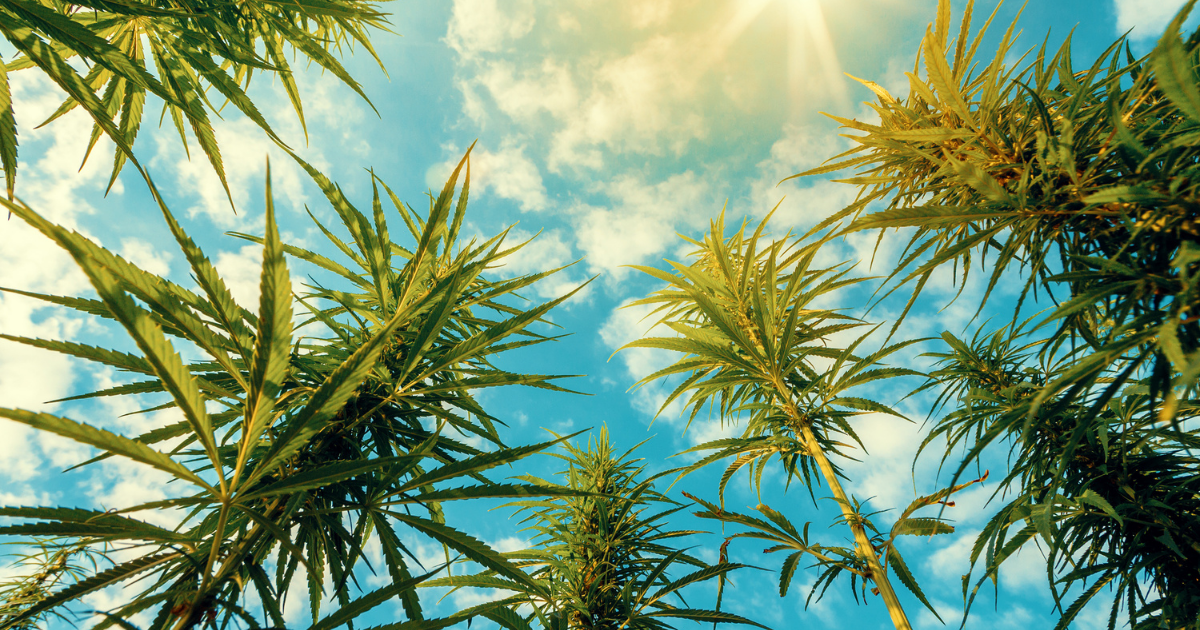
Also, when you water your organic outdoor plants, the runoff and wastewater are filtered through the soil. They have a lesser chance of draining into the local watershed, which minimizes the environmental impact.
When comparing the potential impact on the environment and the resources needed to grow and harvest a cannabis crop, growing outdoors is the “greener” option.
Comparing Look and Feel of Indoor vs. Outdoor Cannabis
When shopping for cannabis, aficionados can be as shallow as a contestant on a dating show. The look, or “bag appeal,” of cannabis is just as important, if not more, than the smell and desired effects. We all want our cannabis flowers to be shiny, shimmering, and splendidly beautiful. Many consumers regard indoor-grown flowers as superior to outdoor solely based on the look and feel.
Cannabis flowers grown outdoors are usually naturally darker in color, less densely packed, and can sometimes look like they’ve lived a full life before ending up in your stash. Those natural nugs have dealt with weather changes, variations in sunlight and moonlight, temperature mood swings, and pests. Indoor cannabis plants don’t have to contend with those variables giving them a better chance of looking runway-ready. These factors don’t make outdoor cannabis any less beautiful; it simply means that it won’t be winning any beauty contests due to the standards most cannabis enthusiasts have set for themselves.
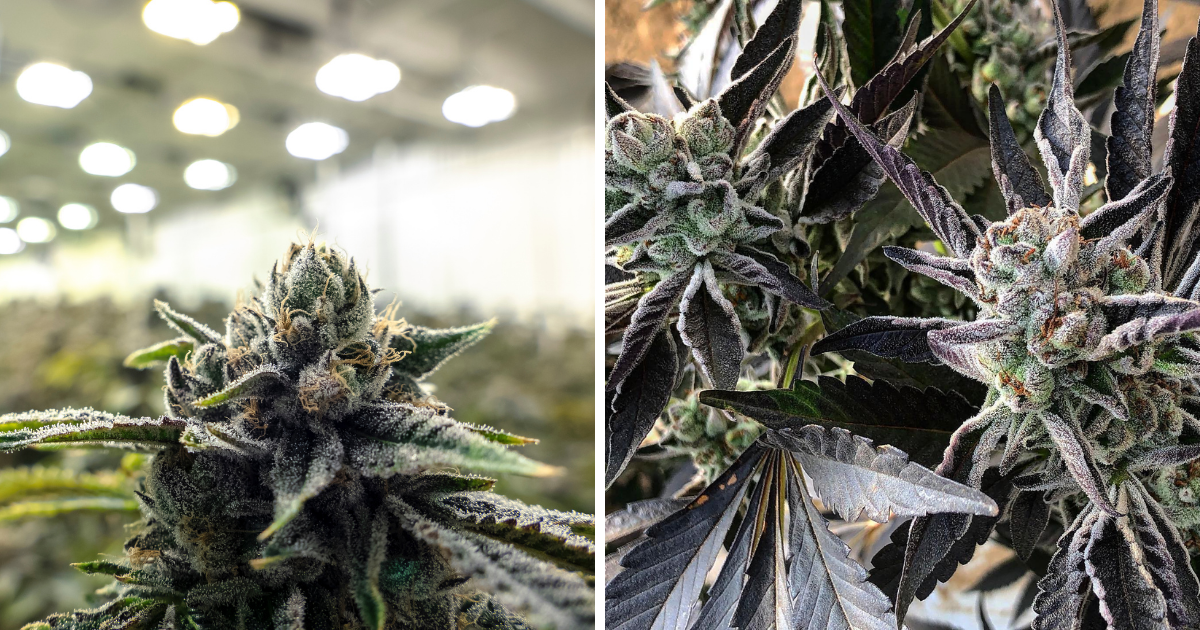
Indoor cannabis can be absolutely gorgeous and almost picture-perfect when grown with love and affection. Connoisseurs love the bright orange, red, green, and purple colors that envelop indoor-grown flowers. The nugs are typically more densely packed, not as leafy as outdoor flowers, and can sometimes showcase more crystalline trichomes when compared to their outdoor sisters.
There are several brands like Alien Labs and Connected that utilize both cultivation methods and sometimes even with the same cultivars. If you want to do a direct comparison yourself, grab a jar of Alien Labs’s Area 41 indoor and outdoor!
Comparing Potency of Indoor vs. Outdoor Cannabis
When discussing cannabis potency, enthusiasts and growers alike typically refer to the concentration of THC or THC percentage. When comparing the strength of indoor and outdoor flowers, you’d be hard-pressed to find a direct correlation depending on the growing method.
Several factors determine cannabis potency. Yes, cannabis grown indoors provides more control for the grower and doesn’t have to fight the elements like outdoor cannabis, so the grower has more power to influence the THC percentage in the final frosty nugs. With that said, the THC percentage isn’t the only factor that can contribute to an enjoyable smoking experience with all the effects that a cannabis lover would want from their flower.
If you’d like to learn more about choosing the best flower without focusing on THC percentage alone, click here.
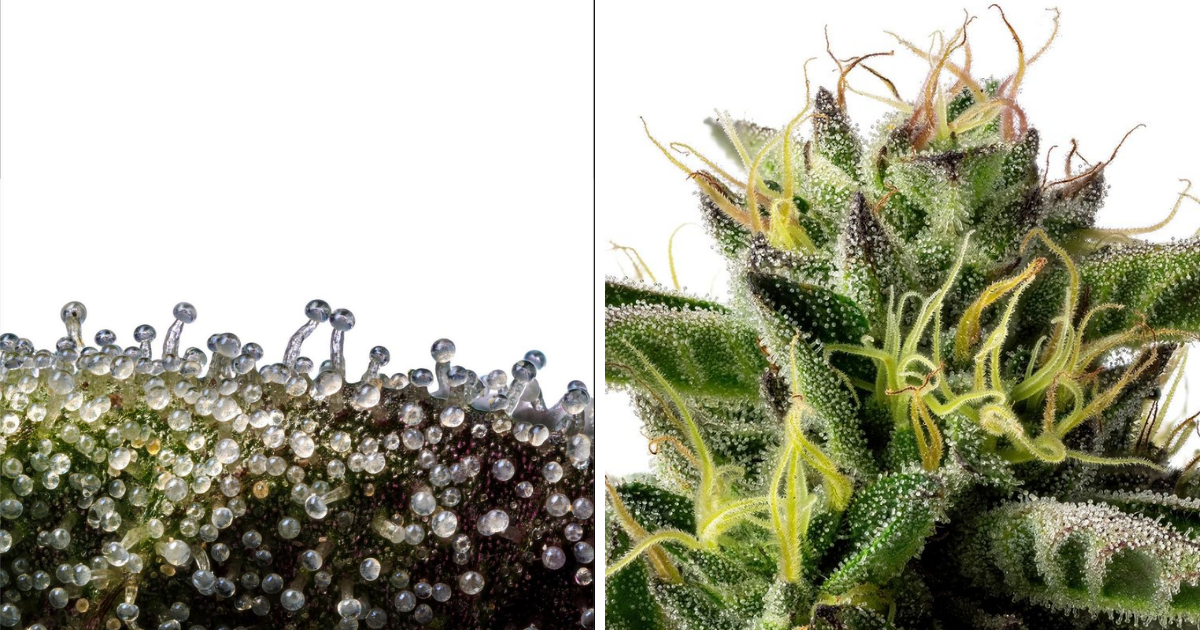
Comparing Flavor and Cannabinoids of Indoor vs. Outdoor Cannabis
Sun-grown or outdoor cannabis typically results in more complex cannabinoid profiles thanks to the full light spectrum provided by the sun. Where indoor flowers are grown in ideal conditions that gives them a better chance of producing “stronger” buds in terms of THC, outdoor flowers have the potential to have higher levels of multiple cannabinoids, including THC, CBD, THCv, etc. These more highly complex cannabinoid profiles support the theory of the “Entourage Effect,” meaning there’s a fuller spectrum of cannabinoids that can interact with each other and enhance their effects.
Along with cannabinoids, terpenes are a major determining factor in what kind of experience you will enjoy when consuming cannabis. Outdoor-grown cannabis is widely considered to have more complex flavor profiles with subtle characteristics you might not find in indoor-cultivated cannabis. Just as with wine, the “terroir,” or natural environment in which the cannabis was grown, contributes to the overall flavor.
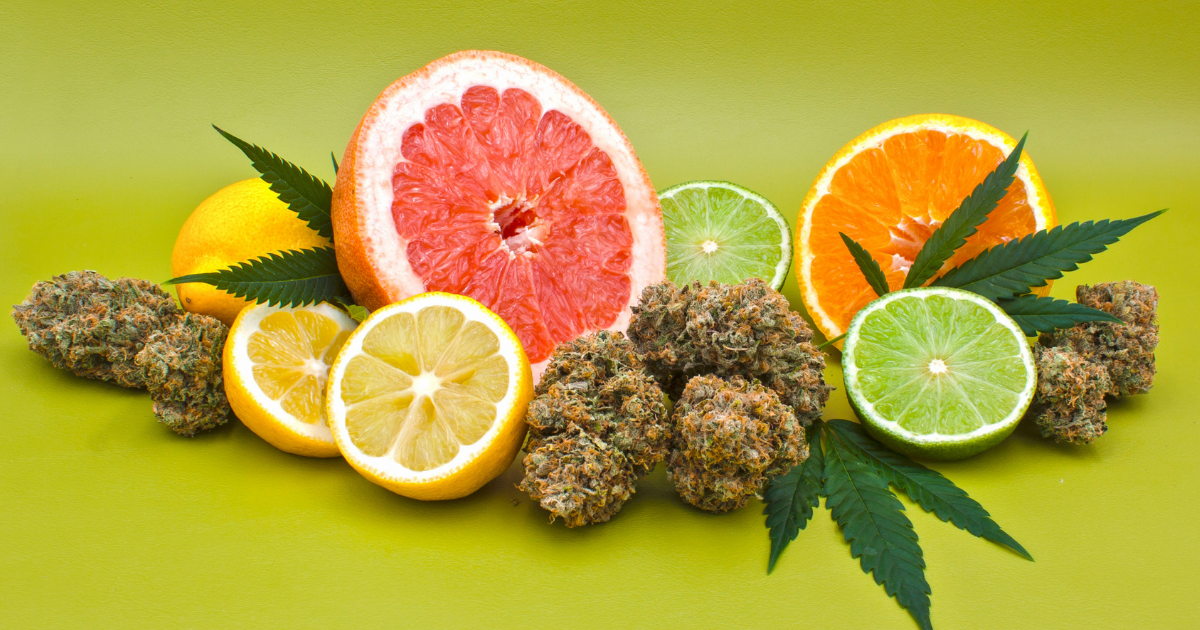
Sunna Ra Acre has conducted experiments comparing the terpene profiles of identical cultivars grown indoors and outdoors. The results of those experiments were definitive that outdoor-grown cannabis flowers almost always have higher terpene percentages meaning they can be more aromatic and flavorful. At times, they even measured certain minor terpenes that were previously missing in that specific strain.
California breeders, cultivators, home growers, and brands alike are all on a quest to discover the ideal grow methods that result in some of the most beautiful cannabis flowers in the world. Lucky for us, we have access to these brands and cultivators and can conduct a few experiments of our own to discover the perfect flowers for our individual needs.
Take a walk through our selection of the tastiest, most exciting cultivars available in California and discover for yourself whether you prefer indoor or outdoor cannabis.
DISCLAIMER: THIS SITE DOES NOT PROVIDE MEDICAL ADVICE.
All information, including but not limited to, text, graphics, images and other materials contained on this site are for informational purposes only. No text, graphics, images or other materials on this site are intended to be professional medical advice or a substitute for professional medical advice, diagnosis or treatment. Always seek the advice of your physician or other qualified health care provider with any questions you may have regarding a medical condition or treatment and before undertaking a new health care regimen, and never disregard professional medical advice or delay in seeking professional medical advice because of something you have viewed on this site.